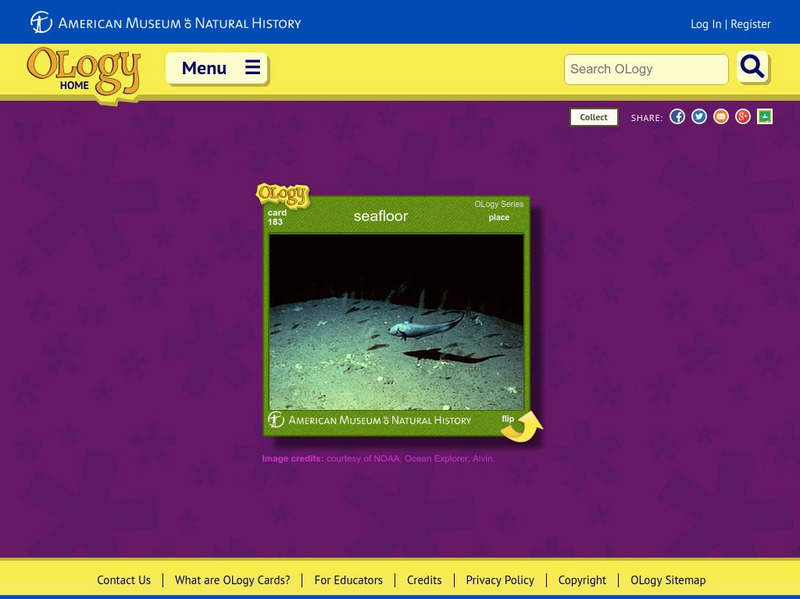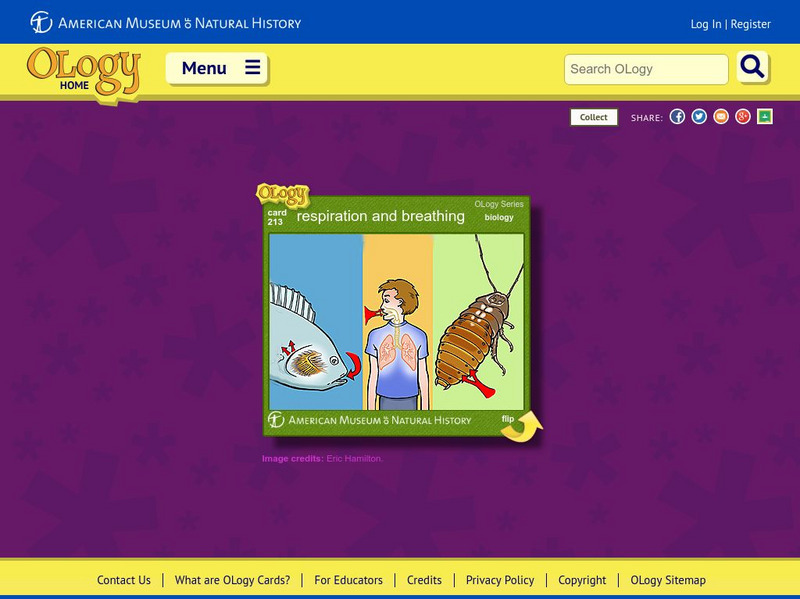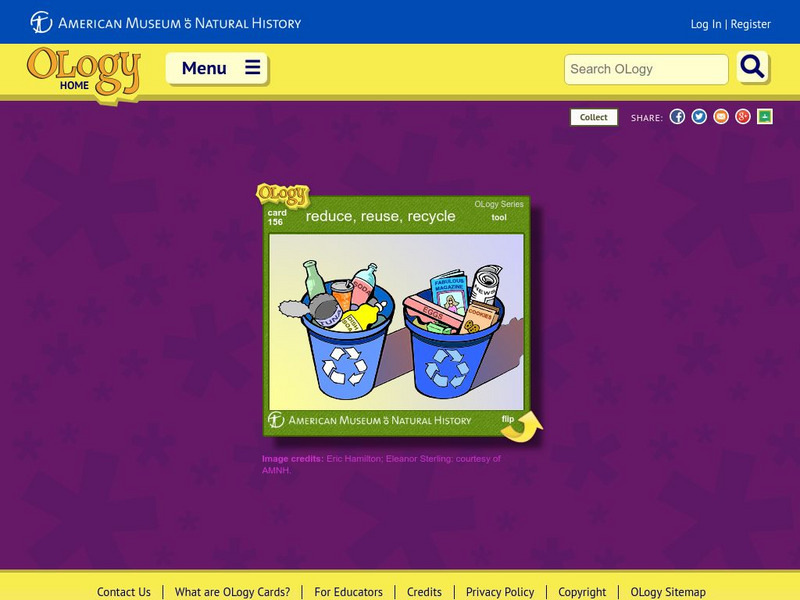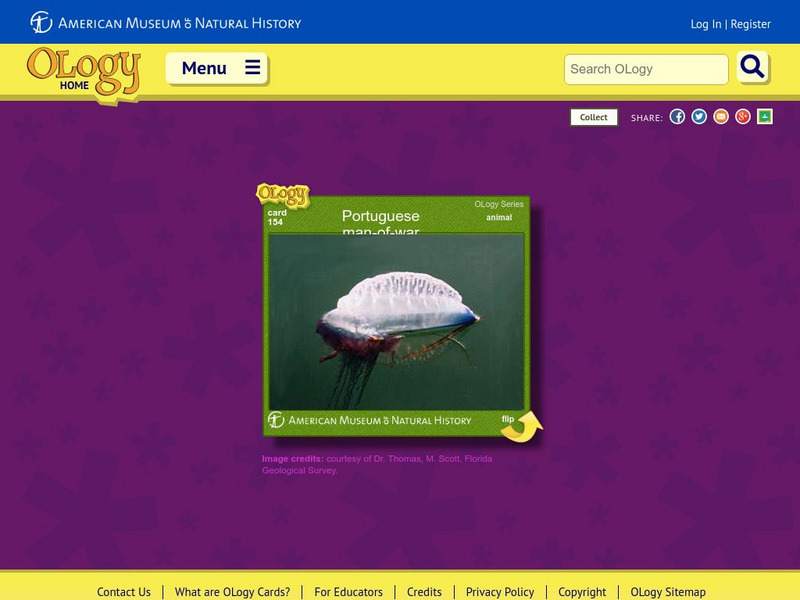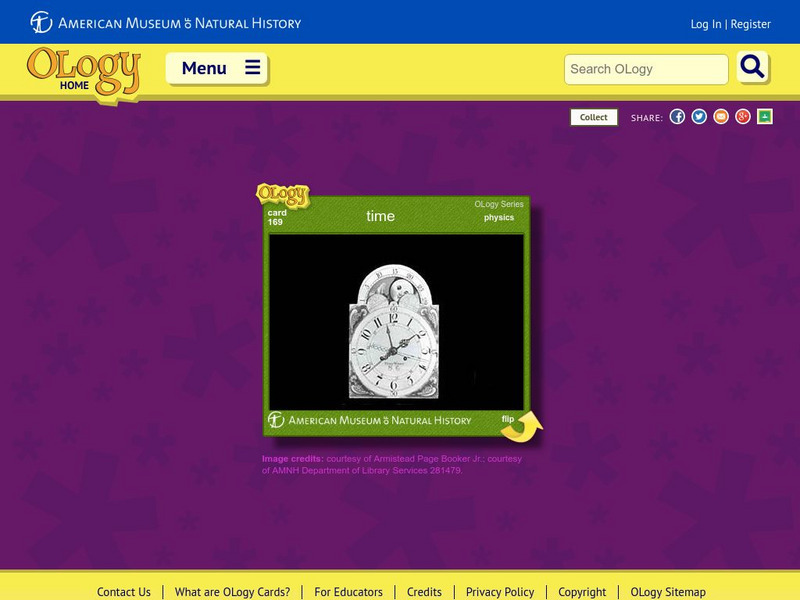American Museum of Natural History
American Museum of Natural History: Feeding O Logy Card
Investigate the process of feeding and the functions of food by flipping over this interactive OLogy card.
American Museum of Natural History
American Museum of Natural History: Galileo Galilei O Logy Card
Turn over this interactive OLogy card to investigate the life and career of Galileo Galilei.
American Museum of Natural History
American Museum of Natural History: Giant Kelp O Logy Card
Flip this interactive OLogy card to find fast facts, questions and answers, and other bite-size pieces of information about the giant kelp.
American Museum of Natural History
American Museum of Natural History: Giant Tubeworms O Logy Card
Flip over this interactive OLogy card to find fast facts, questions and answers, and similar bite-size pieces of information the giant tubeworm.
American Museum of Natural History
American Museum of Natural History: Goliath Frog O Logy Card
Flip this interactive OLogy card to find a definition, fast facts, questions and answers, and other bite-size pieces of information about the Goliath frog.
American Museum of Natural History
American Museum of Natural History: Human Genome Project O Logy Card
Flip this interactive OLogy card to find questions and answers, fast facts, and other bite-size pieces of information to help you understand important characteristics of the Human Genome Project.
American Museum of Natural History
American Museum of Natural History: Snowy Egret O Logy Card
Flip this interactive OLogy card to find a definition, fast facts, questions and answers, and other bite-size pieces of information about the characteristics of the snowy egret.
American Museum of Natural History
American Museum of Natural History: Seismosaurus O Logy Card
Flip over this interactive card to find fast facts, questions and answers, and other bite-size pieces of information about seismosaurus.
American Museum of Natural History
American Museum of Natural History: Seafloor O Logy Card
Learn about the seafloor and the creatures that live there by turning over this interactive OLogy card. Find questions and answers, fast facts, and similar bite-size pieces of information on the subject.
American Museum of Natural History
American Museum of Natural History: Sea Otter O Logy Card
Flip over this interactive OLogy card and start learning bite-size pieces of useful information about the sea otter.
American Museum of Natural History
American Museum of Natural History: Ring of Fire O Logy Card
Flip over this interactive OLogy flash card to read about the Ring of Fire, a series of volcanoes in the Pacific Ocean along the Pacific Plate.
American Museum of Natural History
American Museum of Natural History: Respiration and Breathing O Logy Card
Flip this interactive OLogy card and start learning bite-size pieces of useful information about the process of respiration and breathing.
American Museum of Natural History
American Museum of Natural History: Reduce, Reuse, and Recycle O Logy Card
Turn over this interactive OLogy card and start learning bite-size pieces of useful information about reducing, reusing, and recycling.
American Museum of Natural History
American Museum of Natural History: Radiated Tortoise O Logy Card
Flip this interactive OLogy card to find fast facts, questions and answers, and other bite-size pieces of information about the radiated tortoise.
American Museum of Natural History
American Museum of Natural History: Pseudoscorpions O Logy Card
Flip this interactive OLogy card to find fast facts, questions and answers, and other bite-size pieces of information about pseudoscorpions.
American Museum of Natural History
American Museum of Natural History: Portuguese Man of War O Logy Card
Turn over this interactive card and start learning bite-size pieces of useful information about the Portuguese man-of-war, such as its diet, habitat, and physical characteristics.
American Museum of Natural History
American Museum of Natural History: O Logy: Train of Thought
Try out your ability to think like Einstein by working through two thought experiments that help explain how satellites stay in orbit and how the speed of light affects the universe.
American Museum of Natural History
American Museum of Natural History: Glowing in the Ocean
This site focuses on underwater animals that create their own light using bioluminescence. It also provides the lyrics and audio of a catchy tune putting bioluminescence in the spotlight.
American Museum of Natural History
American Museum of Natural History: Ology: Bio Benefits
Learn about the many benefits we get from biodiversity, such as its many environments, its influences on cultural traditions, and how our basic needs are met because of it. Click on the word links to see interactive flashcards.
American Museum of Natural History
American Museum of Natural History: Triassic Period O Logy Card
Review essential information about the Triassic Period on this short, interactive card. Includes facts about Pangaea. Try answering questions when you're finished.
American Museum of Natural History
American Museum of Natural History: Time O Logy Card
Flip over this interactive OLogy card to find short overviews, fact-or-fiction questions, and similar bite-size bits of information about the nature of time, time travel, atomic clocks, and the general theory of relativity.
American Museum of Natural History
American Museum of Natural History: Tibetan Antelope O Logy Card
Flip this interactive OLogy card and start learning bite-size pieces of useful information about the Tibetan antelope, such as its habitat, diet, size, and characteristics.
American Museum of Natural History
American Museum of Natural History: Thought Experiment O Logy Card
Learn what thought experiments are and the role they play in furthering scientific thinking by turning over this interactive OLogy card. Find questions and answers, fast facts, and similar bite-size pieces of information.
American Museum of Natural History
American Museum of Natural History: Termites O Logy Card
Turn over this interactive OLogy card to find fast facts, questions and answers, and similar bite-size pieces of information to help you understand termites.










